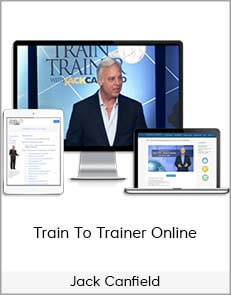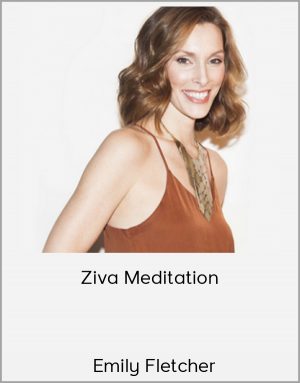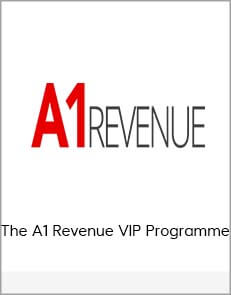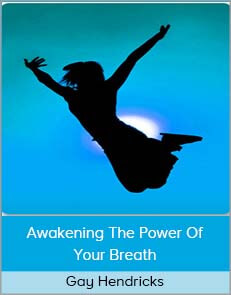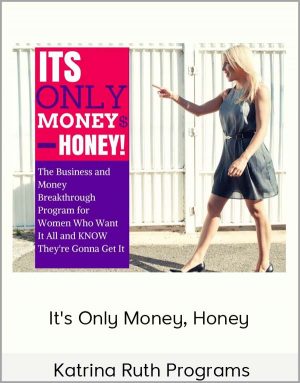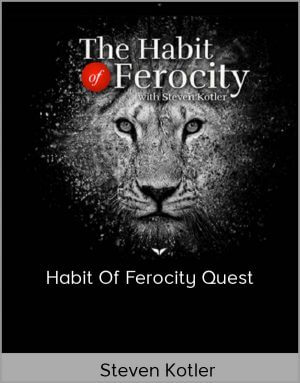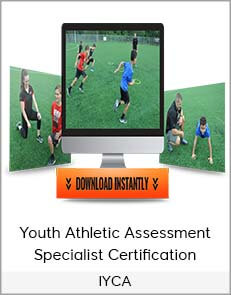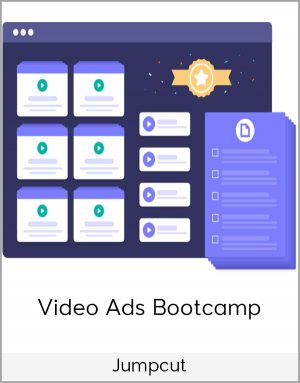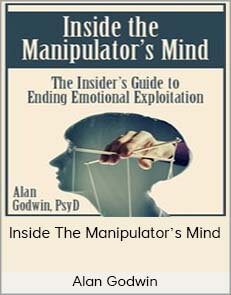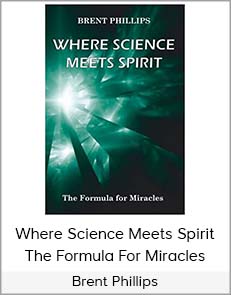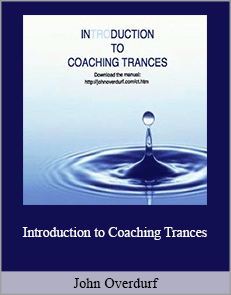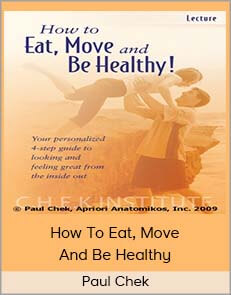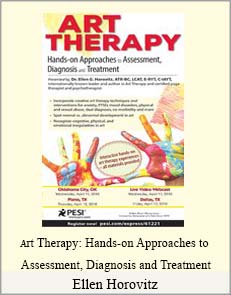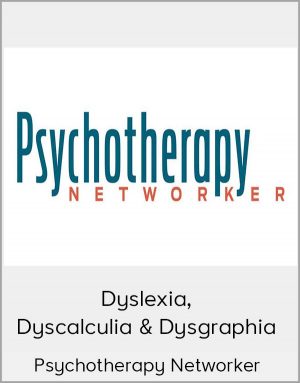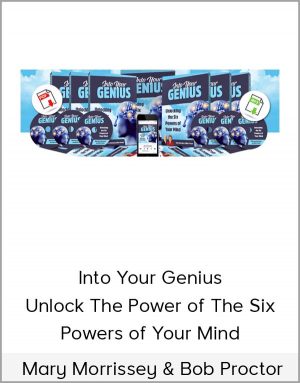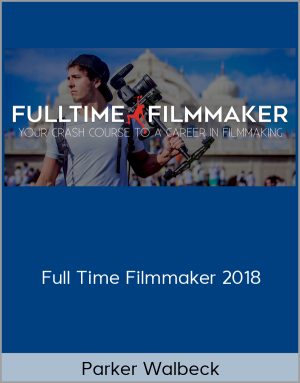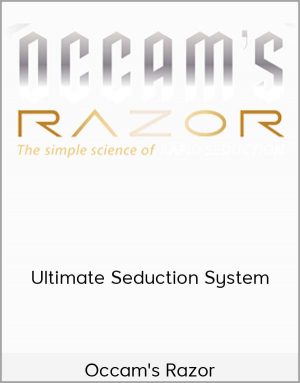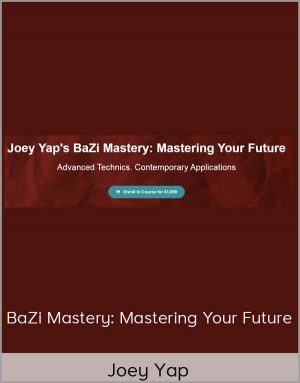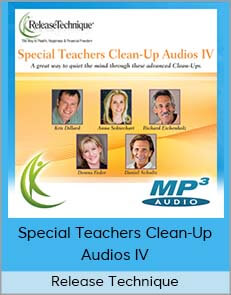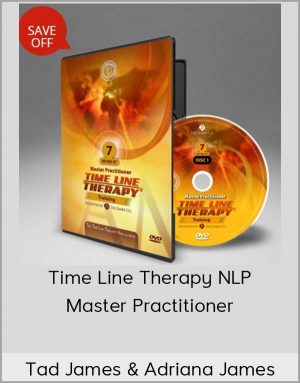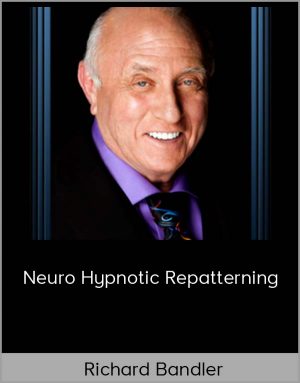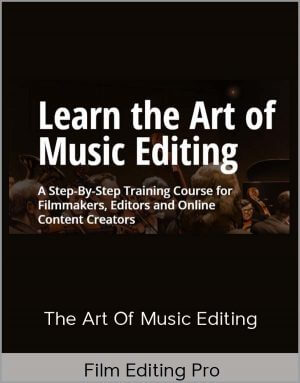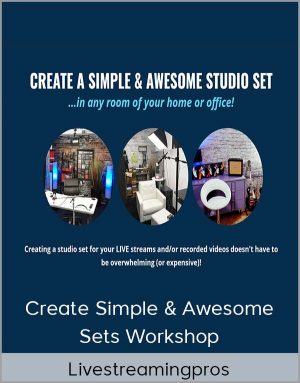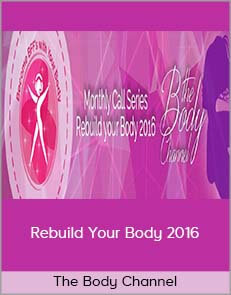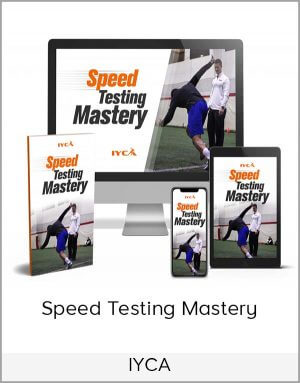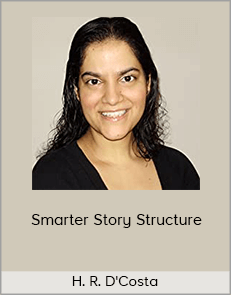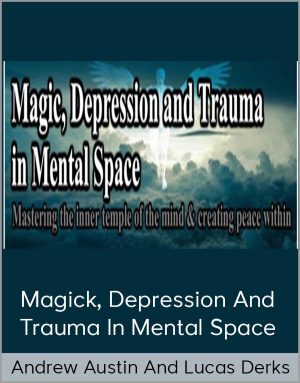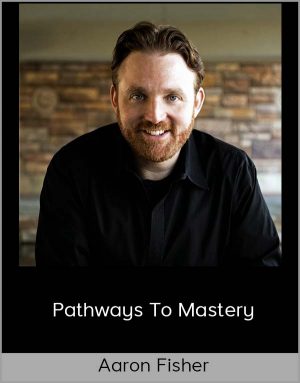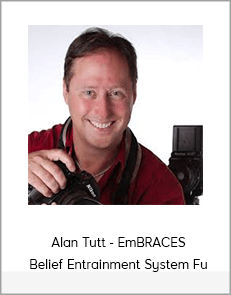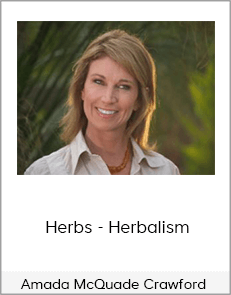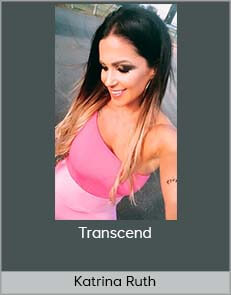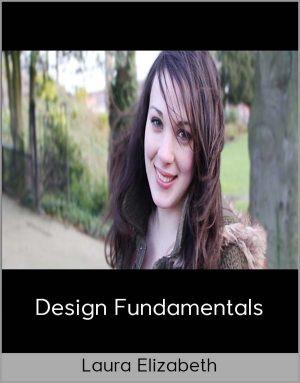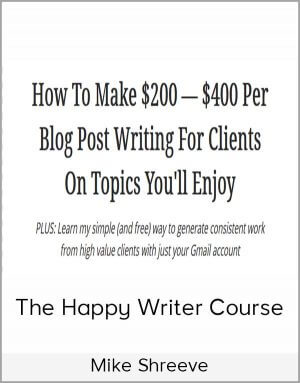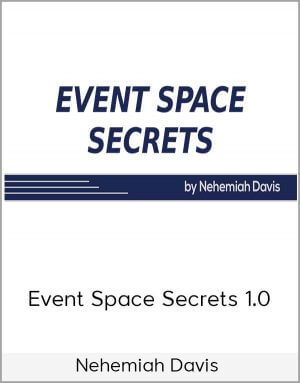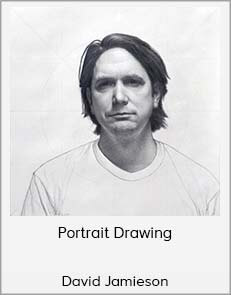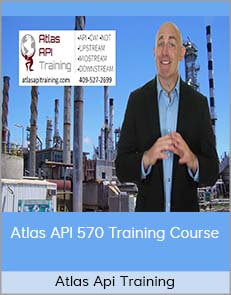-
1 × $295.00
-
1 × $55.00
-
1 × $35.00
-
1 × $75.00
-
1 × $10.00
-
2 × $67.00
-
1 × $25.00
-
1 × $200.00
-
1 × $370.00
-
1 × $35.00
-
1 × $40.00
-
1 × $80.00
-
1 × $25.00
-
1 × $40.00
-
1 × $90.00
-
1 × $11.00
-
1 × $55.00
-
1 × $72.00
-
1 × $14.00
-
1 × $35.00
-
1 × $129.00
-
1 × $60.00
-
1 × $280.00
-
1 × $10.00
-
1 × $30.00
-
1 × $90.00
-
1 × $70.00
-
1 × $37.00
-
1 × $40.00
-
1 × $5.00
-
1 × $19.00
-
1 × $30.00
-
1 × $45.00
-
2 × $57.00
-
1 × $142.00
-
1 × $10.00
-
1 × $50.00
-
1 × $85.00
-
1 × $77.00
-
1 × $190.00
-
1 × $200.00
-
1 × $50.00
-
1 × $10.00
-
1 × $200.00
-
1 × $20.00
-
1 × $87.00
-
1 × $65.00
-
1 × $125.00
-
1 × $120.00
-
1 × $20.00
-
1 × $150.00
-
1 × $100.00
-
1 × $92.00
-
1 × $27.00
-
1 × $40.00
-
1 × $69.00
-
1 × $25.00
-
1 × $167.00
-
1 × $40.00
-
1 × $50.00
-
1 × $65.00
-
1 × $40.00
H. R. D’Costa – Smarter Story Structure
$40.00$197.00 (-80%)
Scroll down, go through them, see what this course has to offer, and make your decision.
H. R. D’Costa – Smarter Story Structure
Check it out: H. R. D’Costa – Smarter Story Structure
Smarter Story Structure (older edition)
An online course for screenwriters and novelists who want to write addictively entertaining stories—faster
Tell me the truth.
The writing bug—it’s got you, hasn’t it?
It’s got you bad.
This isn’t the first time, either.
It bit you before, years ago.
Years ago, you tried your hand at writing a novel.
You even tried to get it published.
Sent out query letters and everything.
And got rejected.
Your writing dream didn’t go anywhere, then.
So you gave it up. Set it aside.
Not because of the rejections.
Perseverance isn’t just a word in the dictionary. It’s a way of life. To you, at least.
And no gatekeeper is going to get in the way of you and your dream to share your stories with the world—to have other people lose themselves in your words.
No, you set your dream aside because it wasn’t just about you anymore. You set your dream aside because you had a family to support.
You had to keep your youngest in new baby clothes (so cute, but so costly!).
Had to get new tires for the pickup truck…and eventually a new truck.
And then…
…there was the mortgage.
You had to invest your time in action that would pay those bills, that would help you honor your responsibilities.
So you set your writing dream aside.
You ignored the writing bug.
But now… it’s back.
With a vengeance.
And this time, this time, it won’t let you go.
This time, you figure you owe it yourself to indulge in it.
For one thing, you’re not getting any younger. You’ve got to give voice to the stories inside of you. You can’t bottle them up. Not anymore.
However, while sharing your stories with the world is a big part of your dream, it’s not the only part.
You’re a practical person.
You’re not just in it for the love.
You’re in it for love and money.
Happily, there are more opportunities now than when you first tried to write a novel.
You’ve heard that other writers—people like yourself with no degrees in creative writing, people who get impatient with all the grammar rules—have been making money self-publishing their novels. Some have even become “Kindle millionaires.”
Plus, companies like Netflix desperately need content. They’re on the prowl for original IP (intellectual property). Wouldn’t it be cool if they chose yours?
Honestly, though, while a seven-figure income would be nice, while it would be amazing to see your story developed into a movie…you’d be happy just with some serious side income.
Enough to go out to dinner (and pay the babysitter) even when it’s not a special occasion.
Enough to pay the bills without worrying about your bank balance.
Enough to build a financial cushion in case another mind-numbingly inane rule is instituted at work. With a financial cushion, you could survive that with a smile. (Heck, you could survive another change in regime, too.)
It’s thrilling to think that writing a story—that playing an extensive round of make-believe—could get you there.
At the same time, being a practical person, you recognize that your story isn’t a special snowflake.
It’s a product.
Sure, it has the power to inspire and transform, so it’s more magical than, let’s say, a blender (although those green-smoothie enthusiasts may disagree!).
Nevertheless, despite its transformative power, your story is a product.
Since you’ve been blessed with a double dish of common sense, you know that to make serious side income selling a product, you have to do at least two things:
(1) You have to produce a high-quality product that satisfies your customers (in this case, readers). All the marketing tricks in the world can’t compensate for a dull plot.
(2) You have to produce additional products (also of high quality, like the first). It’s basic math. The more enthralling novels you have for sale, the more ways there are for readers to give you their money.
To your way of thinking, with those two things, you have a solid recipe for success.
I know you’re not afraid of hard work.
You can put in the hours to make your novel as entertaining as possible. And, to achieve your dream, you’re willing to invest the time to do it again…and again…and again.
But…
Given the choice, you’d prefer to work smarter, not harder.
That’s why you’re interested in mastering story structure.
That’s why you’re thinking about taking this course.
You’ve realized that it could help you get where you want to be (writing addictively entertaining stories; writing them faster).
What does it take to write a gripping novel or screenplay?
Not a degree in French lit, that’s for sure.
You don’t need to know all the ins and outs of grammar or use $10 words, either.
Your grandpappy could captivate you—anyone, really—with his tall tales, and he didn’t even graduate from high school.
Yet, he could hold everyone spellbound.
They’d be so enthralled, they’d almost forget to breathe.
And that’s the secret to telling a great story: delivering the ups and downs—the roller-coaster ride—that keeps readers glued to your pages.
As Chris Vogler explains in The Writer’s Journey:
The structure of a story acts like a pump to increase the involvement of the audience. Good structure works by alternately lowering and raising the hero’s fortunes and, with them, the audience’s emotions.
(By the way, Vogler is the guy Disney called in to help develop The Lion King. And we all know how that turned out. Jackpot!)
Now…you understand what Vogler is getting at.
The principle?
You got that.
The practice of it, on the other hand?
Getting that down has been trickier than you expected.
Sure, some of the scenes in your most recent draft could give Grisham or Cussler a run for his money.
But, on the whole, your plot doesn’t hit the mark. It doesn’t meet your standards.
It’s missing something.
It doesn’t have that up-and-down rhythm that captivates readers. It doesn’t contain that roller-coaster ride that makes readers say “please take my money” the next time they see your name (you know, the way they do with Grisham).
You’re close. You’re not totally clueless. You’re somewhere in the vicinity of delivering that experience to readers, but you’re not quite there yet.
Equally aggravating, you have the nagging sensation that you’re not doing justice to your mind-blowing story idea. It could be a huge breakout success…if only your plot were less awkward—if it were less like a colt the first time on its feet.
Enter story structure.
With three-act structure (and the essential plot points it encompasses), you have a reliable framework to organize your plot in a way that’ll strike a chord with your readers.
With it, you can easily diagnose what’s not working and minimize the chances that audiences will get bored. (But, at the same time, you’ll avoid overwhelming them with too much action.)
With it, you’ll be able to your story in the right place—and keep readers hooked to your pages, ensuring that they’ll still be around to enjoy the grand finale you have in store for them.
With sturdy structure girding your plot, you can showcase your story idea (the one that even Michael Crichton would be envious of) to best effect.
Because your readers won’t be distracted by sluggish pacing, they’ll be able to appreciate your hero (you know, the one who’s cooler than James Bond and Jack Reacher put together).
When asked what makes a great story, Steve DeSouza (the guy who wrote the script for Die Hard), basically said you need two things: surprises—and structure. To quote: “I’m a firm believer in the three-act structure and all the Aristotelian techniques that are a part of a good story.”
Speaking of Aristotle, three-act structure was being used long before his heyday. (That’s more than 2,000 years ago!)
And it’s still being used today.
Why has it endured for so long?
Because it works.
This course will teach you how to use it to maximum advantage.
Learn how to deliver a roller-coaster ride that’ll keep readers glued to your pages.
Desperate to make the most out of your writing time?
Your writing time isn’t like your phone plan.
It’s not unlimited.
You’ve got to squeeze it in between work, driving to work, and the occasional workout.
Plus, you’re committed to being there, in the present moment, with your kids.
With all of this on your plate, you don’t have much free time leftover for writing.
You’ve got to make the most of what you’ve got, which is why you’re so keen to increase your productivity during your writing sessions.
Story structure can help with that.
To explain how, first let me ask you a question. (Technically, a series of them.)
What’s it like to figure out the plot of your story as you go along?
It wastes so much time, right?
Why?
Because—instead of writing—you spend half of your time staring at a blank screen, while wondering, What happens next?
Or, in another scenario, your story may off being a breeze to write. You’re cruising along—and then, 50 pages in, you just stall out.
You have no clue where your story is going.
You’ve got nada. Zilch. Nothing.
Nothing but a wall of blank pages.
A disheartening prospect, certainly—but with story structure, the picture gets rosier.
With story structure, you can increase your output and avoid the frustration of squandering your writing time.
How?
Story structure gives you markers to write toward.
Now (as described above), these markers will help you generate a gripping roller-coaster ride of a story.
But they can accomplish more than that.
That’s because these markers can function like streetlights on a long road. You won’t be flailing in the dark, not when these markers will light up your path ahead.
No need to wonder, Where am I going?
You’ll know.
And with these markers there to guide you, you should spend less time staring at a blank screen—and more time actually writing.
You’ll be able to hit your target word count—easily.
Also worthy to note: there are empty stretches between the markers. This means that you have the freedom to make discoveries as you go. In other words, you can experience gains in productivity by only mapping out some of your plot in advance. You don’t have to map out all of it.
(To be clear, if you want to be an efficiency ninja, then you probably need to go into greater detail, and make more of a compromise between freedom and efficiency…but that’s not the topic of this course.)
So far, we’ve only been talking about saving time while writing a first draft. But story structure can also help you save time when the first draft is done and it’s time to revise your baby.
Why is that?
Well, structure is a big-ticket, big-picture item.
When it’s broken, you can’t fix it with a polish.
Nope.
Fixing it requires a complete overhaul.
And that takes a couple of weeks—probably more.
In all likelihood, correcting the weaknesses in story structure will delay your target date of completion by months.
Even worse, despite your best effort, despite all your hard work, your story still might not read right.
After all the details you had to rework to get everything to hang together, your final draft can feel more like a Frankenstein than a gripping, well-woven tale.
But if you figure out the structure of your story in advance, then you can avoid drowning in weeks (possibly months) of revision. You can avoid this hassle.
Then, when you’ve finished with your first draft, you won’t be looking at a complete structural overhaul. Instead, you’ll just have to punch up your descriptions and polish up your dialogue.
Even better?
Because your structure is sound, because your plot flows smoothly, readers will be free to appreciate it. (And by it, I mean your stunning descriptions and Lee Child–esque dialogue).
The benefits keep piling up
With the time you save (both by writing more and by editing less), you could ramp up production, perhaps doubling or tripling your output.
But there are other options, too.
You could learn how to navigate the murky waters of social media (without being annoying).
You could enjoy some downtime with your spouse, maybe sip some margaritas on the deck.
You could play in the backyard with the kids.
The choice is yours.
Your writing time doesn’t have to eat into your family time.
What Will You Get With This Course?
- 29 no-nonsense, fluff-free lessons (FYI: This course was designed with a practical person, like yourself, in mind.)
- 14 bite-sized videos (All the videos are under 10 minutes so that you can improve your writing skills without disrupting your busy schedule.)
- 3 audio-only lessons and several high-quality visuals—100+ images, 12 infographics, and 5 slide decks (I like to think there’s something there for you, regardless of your learning style.)
- 3 PDF workbooks designed exclusively for this course
- The Three-Act Structure Workbook will help you apply what you’ve learned—without getting overwhelmed.
- The Audio Companion Workbook helps you test how much info you’ve retained from the audio-only lessons.
- The Story Structure Organizer will help you build a sturdy structure for your next writing project—step by step.
- freedom to decide when you want to complete each lesson (Once you buy, you get immediate access to all the course materials, which you can review at your own pace.)
- the convenience of being able to access each lesson from the comfort of your home—and perhaps, in the comfort of sweatpants (It’ll be like getting all the takeaways from a weekend seminar without the hassle of traveling to—and from—the seminar venue.)
Your learning journey might look like this…
Pay your bills with the power of your imagination.
Learn How To Overcome Common Reader Complaints…
As you go through the 5 modules in this course, you’ll learn practical tips for overcoming the plot problems that readers often gripe about.
Take a look…
Why do readers abandon novels?
As you can see from this screenshot of a Goodreads infographic, a whopping 46.4% of readers abandon novels because the story ed too slowly.
This problem isn’t limited to novels, either. A few years ago, a studio reader compiled all the reasons why he gave a pass to a script, rather than a recommend (or a consider).
Out of the 300 scripts he read, 69 of them (or 23%) ed too late and “failed to gain traction until after the halfway point.”
In Lesson 1.4 of this course (which comes with a deck of 35+ slides), you’ll learn how to position your inciting incident to solve the problem of sluggish pacing. In Lesson 2.2, you’ll learn how to detect—and fix—the “slow er” problem that the studio reader found in so many scripts.
Coupled with the writing exercises “Tick-Tock,” “Speed It Up,” and “Analyzing Chef” from your Three-Act Structure Workbook, the next story you write should avoid becoming another tragic Goodreads or studio-reader statistic.
What’s it like to be mentored by John Grisham?
I have no idea.
But Tony Vanderwarker does.
For 2 years, Grisham mentored Vanderwarker. (The men are neighbors.) As part of his mentoring sessions, Grisham spilled the secrets of how to successfully write popular fiction.
One of them is this: a strong middle.
Vanderwarker elaborates:
Coming up with the opening and ending is easy, he [John Grisham] says. It’s that 300-page hunk in the middle that has to hold up and not run out of gas.
By the time you’ve finished Module 2 of this course, you should walk away with the confidence that you can write a middle that doesn’t “run out of gas.”
To get more specific, in Lesson 2.1, you’ll learn how to liven up the middle of any (a) plot involving a romance, buddy-cop duo, or road trip or (b) story in the action, thriller, or mystery genres.
In Lesson 2.4, you’ll learn about a neat trick (used in a Colleen Hoover new-adult romance and the heist film Fast Five) to make the end of your story middle more emotionally intense.
Plus, after completing the writing exercise “Gloves Off!” that follows Lesson 2.4, you’ll be less likely to yield to an instinct that can easily derail your quest to write a gripping story middle.
That’s not all. In Lesson 4.3, you’ll learn how to flesh out your story middle with variations of a special plot point. Use this plot point well, and it might even feel like the middle of your story is writing itself!
Could this be the reason a reviewer docked a star from your book? (Or why your script got a pass instead of a consider?)
Take a look at this excerpt from an Amazon.com review for the YA fantasy novel Crown of Embers.
My main gripe with the book is the ending and [that] is what kept it from being 5 stars. Like the previous book, there was a lot of buildup to the climax. You wait the entire book for Elisa to get to the end of her journey. You wait for the fireworks, instead you get tiny little sparklers. Where was my epic fight? Epic something!
This reader was disappointed because she wanted a dazzling finale (fireworks)…but got anticlimax (sparklers) instead.
If you want to leave readers begging for more, you can’t disappoint readers like this.
Unfortunately, I see this problem a lot. That studio reader I mentioned a little while ago? He has too.
Out of the 300 scripts he analyzed, 35 suffered from an anticlimactic ending. (In addition, 30 went “off the rails” during the third act.)
Clearly, you don’t want to drown your readers in an ocean of anticlimax.
Fortunately, in Lesson 3.7 of this course, you’ll learn the secret sauce to creating “fireworks” for your readers. I’ll walk you through it, piece by piece.
PS: In Lesson 3.1, you’ll learn the mindset that you absolutely must cultivate in order to craft a successful story ending.
PPS: Just so you know, the lessons from Module 3 (on story endings) are my favorite. I think you’ll get a lot out of ’em!
Readers succumb to this money maker—yet grumble about it. Here’s one fix…
Go to any reader-centric hangout, and you’d be hard-pressed not to find vocal loathing for cliffhanger endings.
Yet, at the same time, the cliffhanger ending can be a powerful sales tactic.
So if you’d like to steer clear of the controversy—but still enjoy steady sales—what should you do?
Well, in Lesson 4.2, I’ll share with you a simple technique you can use to entice readers to buy the next book in your series—without resorting to the cliffhanger.
This isn’t as bad as the blank page (but it comes pretty close).
Have you ever bought lemonade from the store?
Like freshly squeezed lemonade, it has the same yellow-white color.
It’s clouded by the same lemony pulp.
And it has the same flavor profile (sweet, yet tart).
But bottled lemonade sure doesn’t taste the same as fresh.
In the same vein…
…there’s a difference between pages filled with words—and pages filled with words worth reading.
(And this worthiness, by the way, is determined by the average Joe just looking to escape reality for a few hours—not by some snooty literary critic.)
While blank pages are the worst, pages filled with words that do NOT add up to a story…well, that’s almost as bad.
That’s because, to succeed—to make serious side income with your writing—your story can’t just look like a great read.
It has to be one.
As author (and writing instructor) James Scott Bell put it:
Turning all that raw material [for a story]…isn’t simply a matter of putting it into words on a page or screen. You have to “translate” it into a form that readers can relate to. That’s what structure does.
Many writers struggle with that last part: translating their words “into a form that readers can relate to.”
All the lessons in this course should help you tackle this widespread problem. In this regard, though, the audio content from Lesson 5.5 is particularly helpful. It recaps 6 ways that three-act structure can improve the odds that your screenplay or novel will, indeed, be a good read (and not just have the right length).
Plus, at the very end of Module 5, you’ll find the Story Structure Organizer: a 70+ page workbook that will help you build—step by step—a sturdy structural foundation for your next novel or screenplay.
This is just a sampling of what you’ll learn in this course…
A brief taste of it, really. If you’d like to get a fuller picture, scroll down to the bottom of this page. There, you’ll get a full list of all 29 lessons.
Also, I’ve made 3 lessons available for immediate preview. Check them out now and instantly get a feel for what this course is like.
Learn how to leave readers begging for more (while you’re on your lunch break!)
Still Have Questions?
Is this course right for me?
You’re the best judge of that. To help you make a decision, I’ve made 3 lessons available for preview.
Scroll down, go through them, see what this course has to offer, and make your decision.
If you buy this course and then decide later on that it isn’t for you, no worries. Request a refund within 30 days of purchase—and you’ll get it, without any hassle.
I’ve read Sizzling Story Outlines, where you covered story structure in detail. Can I still benefit from this course?
You’re right. Part II of Sizzling Story Outlines explored story structure. And this course is all about story structure. Obviously, there’s going to be some overlap.
But this course includes material that can’t be found in Sizzling Story Outlines. I’ve taken some of the best tips and takeaways from my Story Structure Essentials series (plus Story Stakes) and integrated them together in one comprehensive—yet streamlined—package. You won’t just become familiar with the essential plot points of story structure; you’ll know what it takes to execute them well.
Also, with multimedia content and writing exercises (which can be found in this course), the same material usually registers differently than it does when you’re reading text from a book.
Don’t forget, this course also comes with 3 workbooks that are all exclusive to this course. (They’re not the same as the action steps that can be found in Sizzling Story Outlines. They’re also not the same as the Ultimate Story Structure Worksheet that’s available on my website.)
Doesn’t three-act structure produce cookie-cutter stories?
That’s a valid concern, and we’ll address it at length in Module 5.
Let me add one thing: if you’re a screenwriter you have to be able to converse comfortably about three-act structure (even if you’re not terribly keen on it).
That’s because three-act structure is how studio executives analyze scripts. Scott Myers put it best:
As a writer, you can craft a story with however many acts or sequences as you want, however in story meetings, you have to be able to translate that into three acts because that’s the most universal language of screenplay structure in Hollywood.
One way or the other, you’ve got to learn about three-act structure!
You’ve made story structure sound pretty amazing. Can it solve all my storytelling problems?
<p

